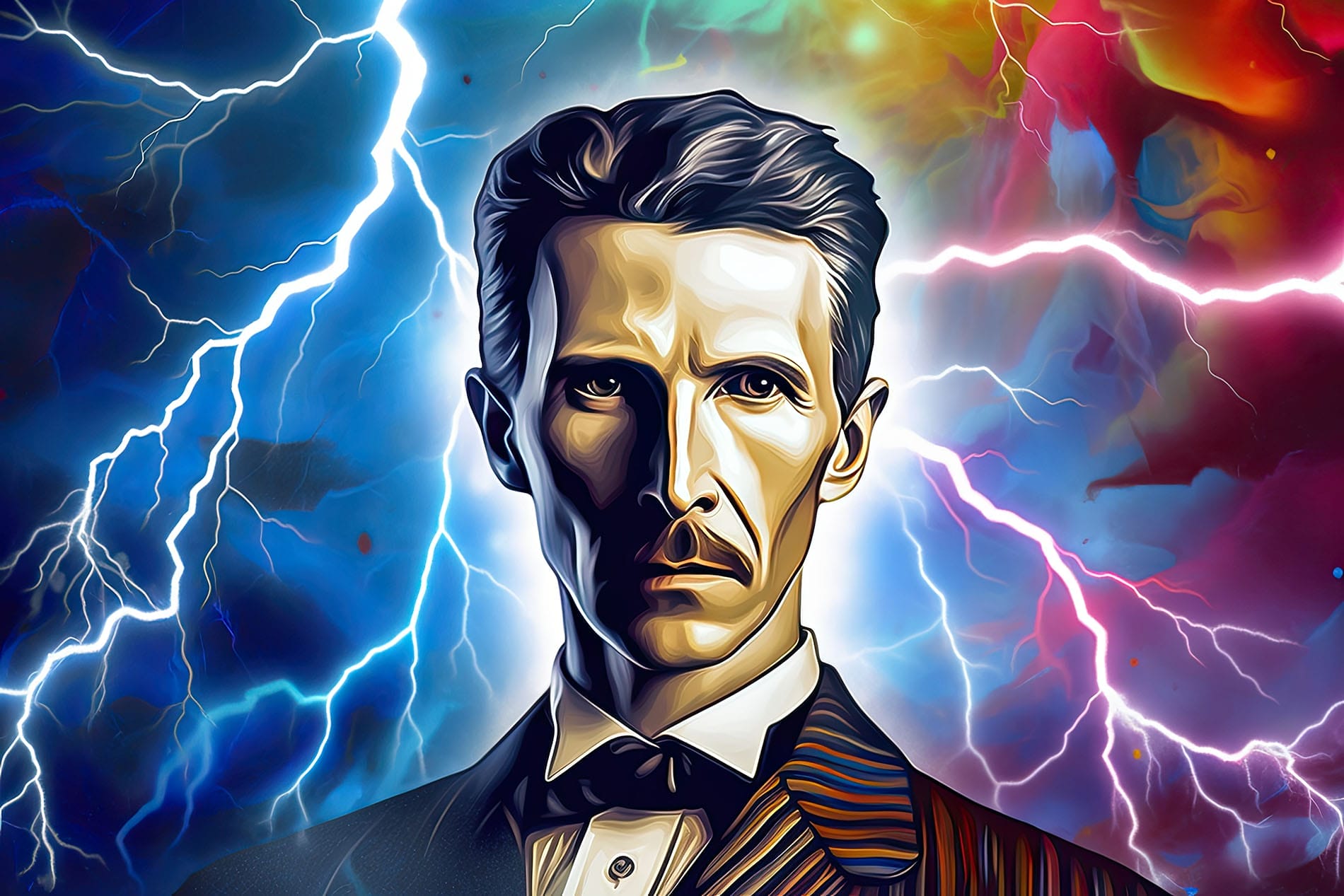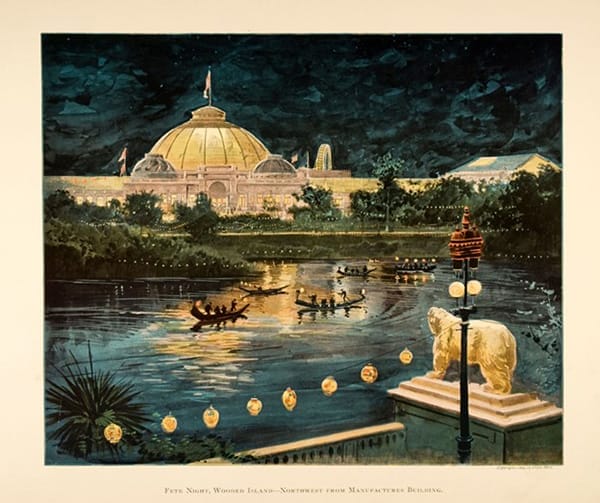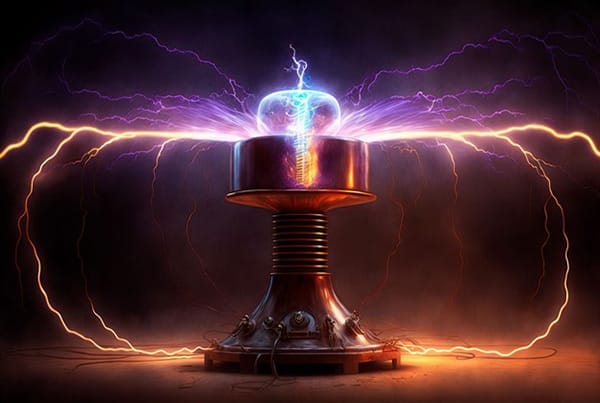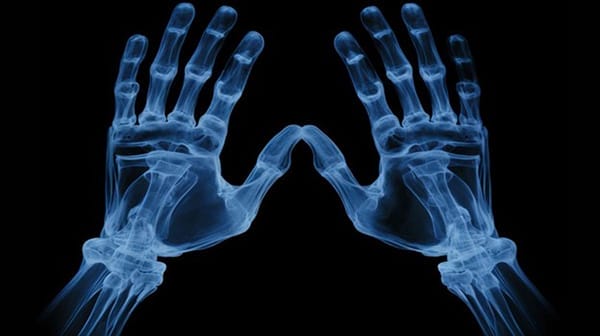“Dubbed the “father of energy,” Nikola Tesla came into this world during a fierce lightning storm. His mother said the storm was not a bad omen and that Tesla would be a “child of light.”
Tesla would become one of the world’s most inventive and controversial characters. Indeed, Tesla once quipped: “If you want to find the secrets of the universe, think in terms of energy, frequency, and vibration.”
His work laid the foundations for modern electricity generation and much more. Like many geniuses, from Vincent van Gogh to Oscar Wilde to Wolfgang Amadeus Mozart, Tesla would die in poverty.
However, like the others, his legacy continues to shape our world today. Let’s look at how Tesla’s energy inventions changed how we understand the world and what it has meant for everyone on the planet.
Who Was Nikola Tesla, Father of Energy Inventions?
Nikola Tesla (1856-1943) was born at midnight between July 9 and 10, 1856, in Smiljan, Croatia. He had a complicated relationship with his Serbian Orthodox priest father and inventor mother. Life wasn’t easy: at the age of seven, he saw his older brother die, and then, aged 12, Tesla survived a severe illness.
Tesla studied engineering at the Austrian Polytechnic School in Graz, Austria, then physics, math, and mechanics. He finished his schooling by studying philosophy at the University of Prague.
A breakthrough Tesla energy invention was not long in coming to the young master. In 1882 at age 26, Tesla was reciting poetry by German poet Goethe Faust in Budapest Park. Something clicked, and Tesla drew a picture of a rotating magnetic field on the floor. This field led to polyphase alternating current power systems (AC) electricity, the backbone of modern electricity grids, also known as AC induction motors.
Why Is Nikola Tesla Famous for Electricity?
Tesla’s AC power breakthrough did not go unnoticed. He started working at Thomas Edison’s Paris-based Continental Edison Company. By 1884, Tesla had been lured to America by Thomas Edison. He landed in New York with just a few cents and the chance to work for Edison Electric Light Company, best known today as General Electric.
This relationship with Edison was to frame and define much of Tesla’s work and success. Edison’s electrical power systems used direct current, whereas Tesla championed his own AC electric current systems.
Direct-current systems allow electrical energy to flow in one direction. In contrast, AC systems enable electrical power to flow in both directions. AC power is much more efficient for power transmission over long distances.
Edison had also promised Tesla $50,000 if the young inventor could improve the DC generation at his power plants. When Tesla delivered his side of the wager, Edison claimed the payment had been declared in jest. Tesla resigned immediately and an engaging rivalry began.
But first, Tesla would be forced to dig ditches to survive until investors backed him to develop an arc lamp at his newly formed Tesla Electric Light Company. Tesla wanted to further work on his AC motors and not the patent designs for the X-rays, switches, and dynamo regulators the investors wanted.
Enter your ZIP Code and compare electricity rates
Did Thomas Edison or Nikola Tesla Invent Electricity?
Neither Tesla nor Edison invented electricity; it occurs naturally in the atmosphere and atoms. But they both helped to harness its potential, Edison with his light bulbs and direct current, and Tesla with many more inventions we’ll explore in this article.
Western Union Company backed Tesla with the money he required to perfect AC power generation and transmission systems. These AC motors are used throughout the world today. But not before a public and protracted battle with Edison.
What Was the War of the Currents?
In the 1880s, Edison’s direct current electricity powered homes in New York, with even high-fliers like J.P. Morgan tapping into this energy. However, DC was expensive, volatile, and challenging to transmit effectively over long distances. DC is hard to step up or down and impractical for use with electrical appliances with different energy requirements.
Tesla’s work on his AC motor came to a head in 1888 when the Croatian-American presented his findings to the American Institute of Electrical Engineers. His paper, “A New System of Alternating Current Motors and Transformers,” impressed American inventor George Westinghouse, who then backed Tesla’s AC motor that powered an electricity generation system.
Together, Tesla and Westinghouse amazed the world. Their AC power-based system allowed U.S. President Grover Cleveland to flick a switch and simultaneously light 100,000 lamps at the Chicago World Fair in 1893, also known as the World’s Columbian Exposition. High-voltage electrical systems were now a reality.
In 1895, Tesla set about building the world’s first hydroelectric power plant at Niagara Falls, with the aim of exporting polyphase (multiple) alternating current. The final victory for the AC motor came in November 1896, with the hydroelectric power plant harnessing the power of the Falls to create electricity. Power was transmitted to Buffalo, New York, and, ultimately, to the highly symbolic New York City, Edison’s previous power fortress.
Did Nikola Tesla Invent Renewable Energy?
Nikola Tesla may have brought hydroelectric power to the world’s attention. Still, the Niagara Falls power plant was far from the first example of its kind. The world’s first hydroelectric project came in 1878 at Cragside in Northumberland, England. America had hydropower plants in Grand Rapids, Michigan (1880), Ottawa, Ontario (1881), and Dolgeville, New York (1881).
Tesla didn’t invent the solar panel or wind turbines, either, but his work on hydropower, which now accounts for 16% of global energy electricity production, was critical. Still, he is not the inventor of renewable energy.
How Did Tesla’s Patents Birth the Modern Power Grid?
Tesla held 112 U.S. patents and at least 308 worldwide patents when he died. Crucial to the modern electrical system was what we call the three-phase system of electric power transmission:
- Electricity generation
- Transmission
- Distribution
AC power could travel large distances, linking power plants with homes, businesses, and industry, forming the backbone of electricity grid systems.
What Are Some Famous Nikola Tesla Inventions?
Of course, such a brilliant mind didn’t stand still with the AC motor. Only now are many people becoming aware of Tesla’s far-reaching imagination and ability to invent solutions.
Many claim Nikola Tesla’s work included plans for mobile phones and supposed death rays. However, the inventor’s fantastic mind didn’t always blend well with exploiting the business opportunities they presented.
Indeed, one of Tesla’s most famous quotes, “I don’t care that they stole my idea … I care that they don’t have any of their own,” reveals much about his working practices. Let’s explore Tesla’s legacy.
What Was the Tesla Coil?
Tesla didn’t limit himself to energy flowing through cables. He believed in the wireless transmission of energy.
He invented the Tesla coil in 1891, which is still used today in radios, TV sets, and telephone circuits, albeit in an updated form. The coil produces high-voltage, high-frequency, and low-voltage electricity. Electromagnets create a changing magnetic field with a voltage that makes currents flow. A Tesla coil can even shoot lightning bolts.
Tesla dreamed of wireless power, transmitting electricity at high altitudes without wires. In 1899, he started to build the Tesla Experimental Station in Colorado Springs. The stated aim was wireless telegraphy of electricity.
Once switched on, the station’s 50-foot diameter Tesla coil generated artificial lightning, invoked thunder heard for miles around, and burned out the dynamo at El Paso Electric Company, plunging the city into a blackout. Tesla experimented tirelessly at this seemingly apocalyptic tower—even detecting radio waves from space—without concrete results to wow the public.
Not satisfied there, in 1898, Nikola delighted crowds at Madison Square Gardens by using a wireless remote control to sail a boat on a lake. Thanks to Tesla, we can switch TV channels from our sofas, open garages, and drive little sailboats, thanks to his remote control invention.
Backed by J.P. Morgan, Tesla next built Wardenclyffe on Long Island to transmit electrical energy. This tower would be a magnifying transmitter, discharging electricity not into the Earth but tapping into the globe’s natural resonant circuits in the sky.
He envisaged a world of wireless communication, dubbing the project World Telegraphy, very similar to the joined-up Wi-Fi life we enjoy today but for electricity. Sadly, the tower was never completed. Funds disappeared once a radio signal was transmitted across the Atlantic—and it wasn’t Tesla who sent it.
Did Nikola Tesla Invent the Radio?
Many credit Italian inventor Guglielmo Marconi for inventing the radio. However, while Marconi did send the first transatlantic radio transmission, an S in Morse Code, Tesla’s radio wave-controlled boat was the foundation.
Tesla was reported to have said: “Marconi is a good fellow. Let him continue. He is using 17 of my patents.”
After many court battles, the U.S. Supreme Court revoked some of Marconi’s patents to restore Tesla, legally, as the founder of radio.
What Was Nikola Tesla’s Shadowgraph?
Wilhelm Conrad Röntgen is credited with discovering X-rays in November 1895. However, Nikola Tesla, the year before, had been experimenting with what he called “shadowgraphs.”
Tesla’s work was delayed because of a fire at his lab. While Röntgen merits recognition, Tesla’s contributions to radiology and using X-rays for medical purposes cannot be forgotten.
Did Nikola Tesla Invent a Death Ray?
Towards the middle of the 20th century, Tesla’s fame waned, and his eccentricities—and debts—grew. His “teleforce” machine was reputedly able to beam metal ions at incredible speeds. Governments thought they could use such a weapon to inflict harm on enemies from up to 250 miles away.
The teleforce idea became known as a death ray in the press. The death ray never saw the light of day as Tesla died before its completion, and no one has since been able to complete the design.
What Is the Tesla Turbine?
The Tesla turbine, invented in 1913, is a bladeless turbine that aims to beat the efficiency of bladed turbines and piston engines. It was largely ignored at the time due to its efficiency issues and the fact many companies had just invested heavily in bladed turbines.
However, almost a century later, engineers are beginning to look once more at the design. They want to incorporate it into vehicles to make them more energy-efficient, seemingly backing Tesla’s claim that he thought one day he could cross the United States using a Tesla turbine-driven engine and just one tank of gasoline.
Did Nikola Tesla Invent the Electric Motor?
There are reports that in 1931, Tesla switched the combustion engine of a Pierce-Arrow in Buffalo with an AC electric motor. However, there’s no actual proof that he invented an electric automobile.
What is true is that Tesla Motors, one of the world’s leading electric vehicle manufacturers, is named after Nikola Tesla.
How Has the World Remembered and Honored Nikola Tesla’s Energy Inventions?
Recognition for Nikola Tesla has been slow. There was no Nobel Prize during his lifetime. Tesla would die alone and in poverty at the New Yorker hotel in 1943, but only after an incredible life. Many people took his ideas and patents and claimed them for their own.
Slowly, things changed, and his genius became more widely known. For example, the International System unit of field intensity for magnetic fields is Tesla (T).
There are several Tesla museums worldwide, in Croatia and Serbia and the Tesla Science Center at Wardenclyffe. While his name may not have been written in neon lights throughout his lifetime, Tesla’s influence in electricity and many more fields is increasingly known and appreciated.
So, whenever a “child of the light” turns on a light, radio, TV, or even switches energy suppliers, spare a thought for the genius Nikola Tesla and his energy inventions.
Brought to you by energysavings.com
All images licensed from Adobe Stock.




